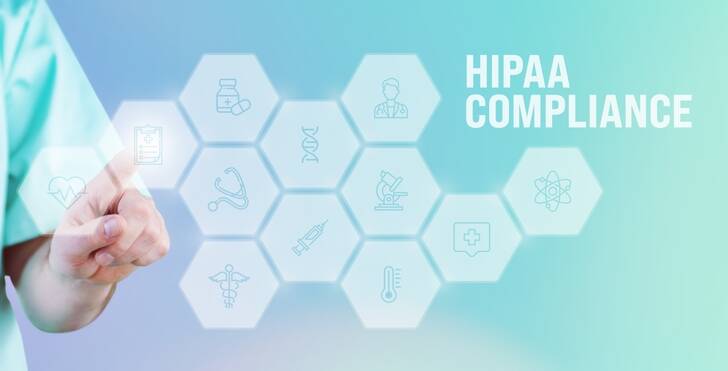In today’s digital world, patient data is a valuable asset, but it’s also a prime target for cybercriminals. Healthcare organizations, from private practices to large hospitals, are responsible for protecting sensitive patient information under the Health Insurance Portability and Accountability Act (HIPAA). HIPAA sets strict guidelines to ensure that patient data is kept confidential, secure, and only accessible to those who need it.
1. Physical Safeguards: Securing the Physical Environment
Physical safeguards are the first line of defense in protecting patient data. Healthcare providers must ensure that physical access to patient information—whether in paper form or digital—remains secure. This includes controlling access to buildings and office spaces, locking up physical records, and protecting hardware devices.
For example, ensure that offices, file rooms, and storage areas are secure, and limit access to authorized personnel only. Electronic devices, such as computers and mobile devices, should be locked when not in use, and backup systems should be stored in secure, off-site locations. A comprehensive physical security plan prevents unauthorized access to patient data, reducing the risk of theft or accidental disclosure.
2. Technical Safeguards: Protecting Data Access and Transmission
Technical safeguards play a key role in maintaining patient data security by controlling and monitoring the access, use, and transmission of electronic health information. These safeguards include encryption, firewalls, and secure communication methods that protect data from unauthorized access, corruption, or leakage.
Encryption is essential for securing patient data, especially when it’s transmitted across networks or stored on digital devices. Encryption makes data unreadable to anyone without the proper decryption key, ensuring confidentiality during electronic communications.
Access Control measures must be implemented to restrict access to patient data only to those individuals who need it to perform their job duties. Healthcare practices should utilize role-based access control (RBAC), which grants different levels of access based on a user’s role within the organization. Furthermore, audit logs should track who accesses patient data, when, and why. These logs help identify unauthorized access and facilitate investigations in case of potential data breaches.
Secure Transmission of patient data is also important. Practices must ensure that any email or file transfers involving patient data are protected with secure methods, such as secure email services or file encryption tools.
3. Administrative Safeguards: Implementing Policies and Procedures
Administrative safeguards involve the policies and procedures that healthcare organizations put in place to ensure compliance with HIPAA and to protect patient data. This includes assigning a HIPAA compliance officer, developing an information security policy, and implementing employee training programs.
A HIPAA compliance officer is responsible for overseeing the practice’s efforts to meet the requirements set forth by HIPAA. This role is essential for ensuring that all employees are educated on their responsibilities regarding patient data protection.
Employee training is a critical component of administrative safeguards. Healthcare staff must be regularly trained on HIPAA regulations, secure handling of patient data, and the consequences of non-compliance. Additionally, employees should understand how to recognize potential security threats, such as phishing attempts or malware, and how to respond to potential data breaches.
Healthcare practices should also develop a data breach response plan. This plan outlines the steps to take in the event of a security breach, including how to notify patients, law enforcement, and regulatory authorities. Timely and effective responses to data breaches are necessary to mitigate the damage caused by compromised patient information.
4. Business Associate Agreements (BAAs): Safeguarding Third-Party Access
Many healthcare practices collaborate with third-party vendors and contractors, such as billing companies, IT providers, and cloud service providers. Under HIPAA regulations, these third parties are considered “business associates” and are required to sign a Business Associate Agreement (BAA) before accessing or handling patient data.
A BAA is a legal contract that outlines how a business associate will safeguard patient data and comply with HIPAA requirements. Practices should carefully vet their business associates to ensure they have proper security measures in place, and that they understand their responsibility to protect patient data. Without a signed BAA, a practice can be held accountable for any violations committed by the business associate.
5. Regular Risk Assessments: Identifying Vulnerabilities
A crucial aspect of HIPAA compliance is conducting regular risk assessments to identify potential vulnerabilities in patient data protection. These assessments help practices pinpoint areas where security could be improved, whether it’s outdated software, weak password policies, or gaps in employee training.
Risk assessments should be done annually or whenever significant changes are made to the practice’s operations or infrastructure. Practices should also conduct regular audits to ensure that the security measures put in place are effective and that all staff members are following procedures.
Learn More About HIPAA Safeguards
HIPAA safeguards are essential for protecting patient data and maintaining the trust of patients, staff, and regulatory authorities. By implementing the right physical, technical, and administrative safeguards, healthcare practices can ensure compliance with HIPAA regulations and minimize the risk of data breaches. From securing physical access to implementing encryption and conducting regular risk assessments, these measures help practices maintain the confidentiality, integrity, and availability of patient data. With patient data protection at the forefront of operations, healthcare organizations can deliver quality care without compromising security or privacy.
